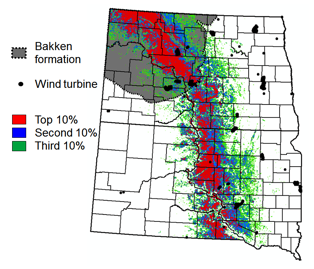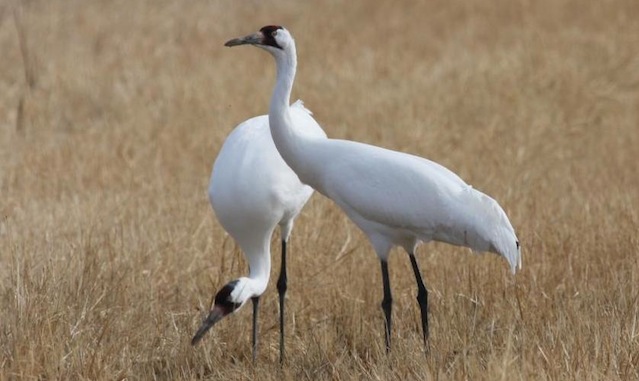The whooping crane is a federally endangered species that relies on land in North and South Dakota to help meet its energy needs during migration and reproduction which ultimately contribute to its potential for population growth. Working with researchers from the USGS Northern Prairie Wildlife Research Center, members of the HAPET (Habitat and Population Evaluation Team) office used whooping crane observations, landscape data, and a model-based approach to identify habitat for whooping cranes migrating through the Dakotas.
The resulting habitat model showed that migrant whooping cranes select landscapes comprised of large wetland complexes and a mixture of cropland and grassland that are close to the migration centerline between Aransas National Wildlife Refuge in Texas and Wood Buffalo National Park in Canada.
We applied the habitat model to landscape data (see figure below) to assess the effectiveness of existing efforts at conserving whooping crane habitat, provide guidance for conservation, and assess threats to whooping crane habitat.

Our results indicated that waterfowl conservation efforts have protected much top-tier whooping crane habitat, primarily in areas east of the Missouri River. In contrast, in the northwestern part of the state, oil and gas development overlaps considerably with top-tier whooping crane habitat.
This model will provide the foundation for strategic habitat conservation for whooping cranes in the Dakotas, as it can be used to guide conservation, identify mitigation sites, and aid in siting development projects.
For more information, contact Neal Niemuth, USFWS HAPET Office, Bismarck, ND

